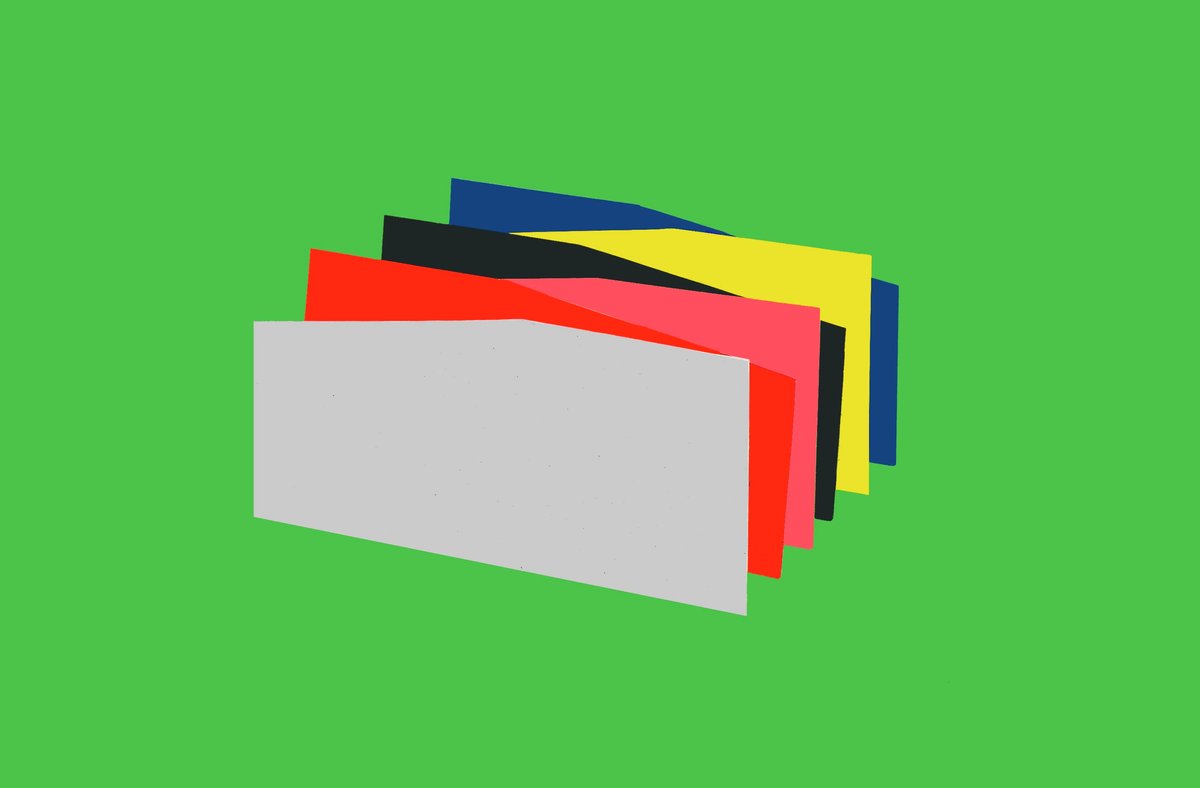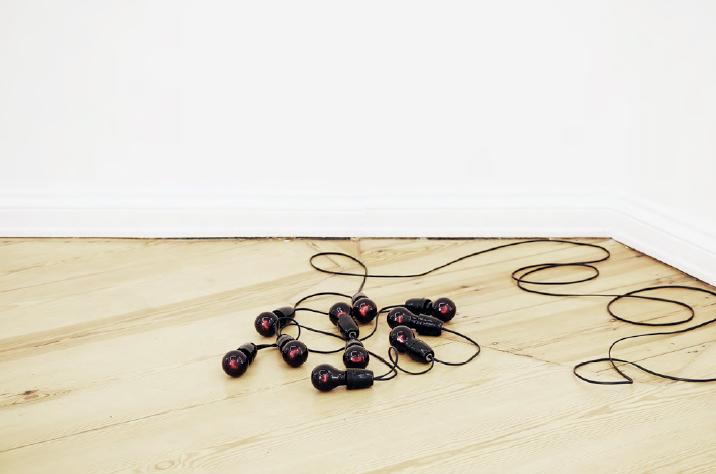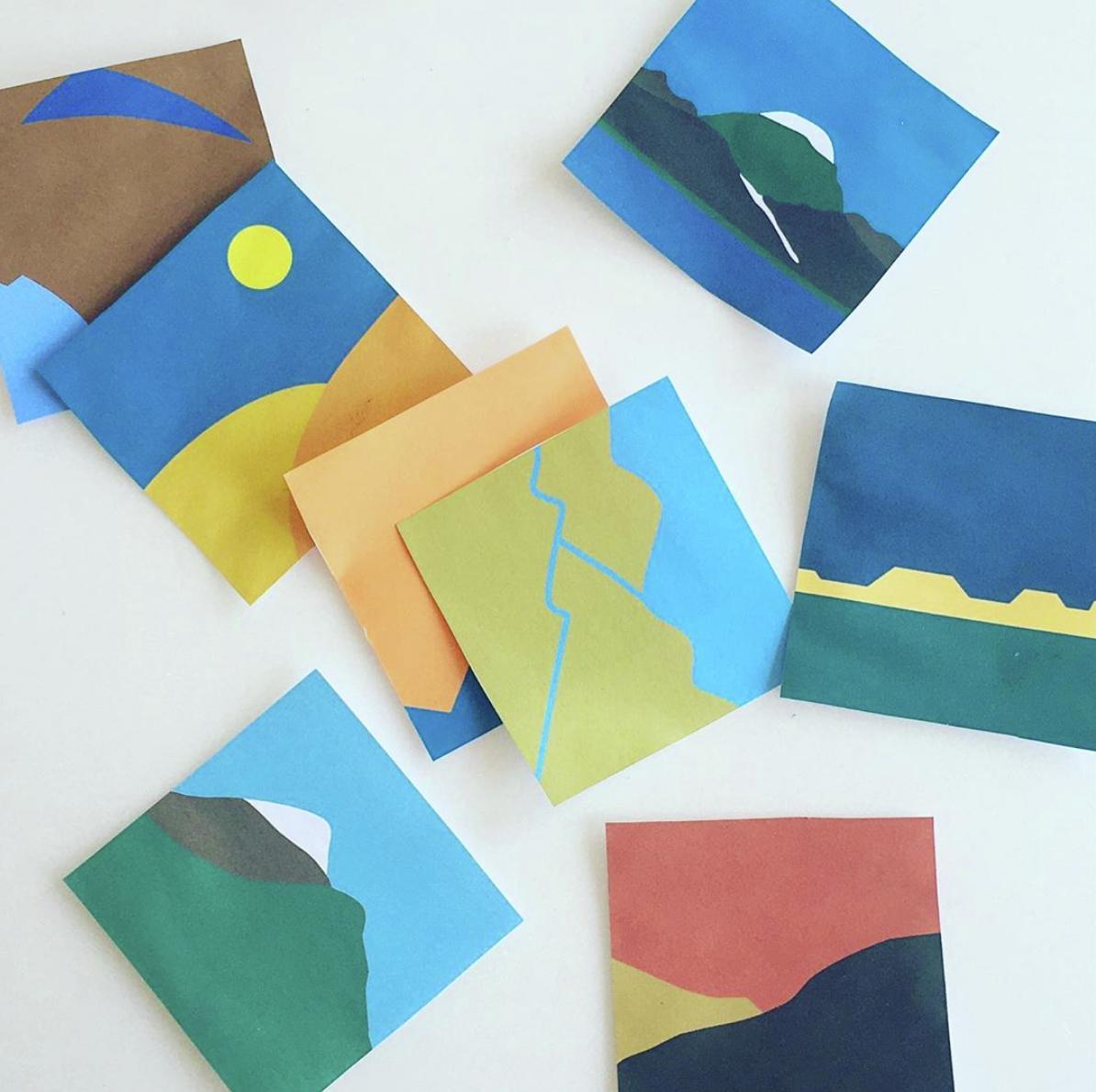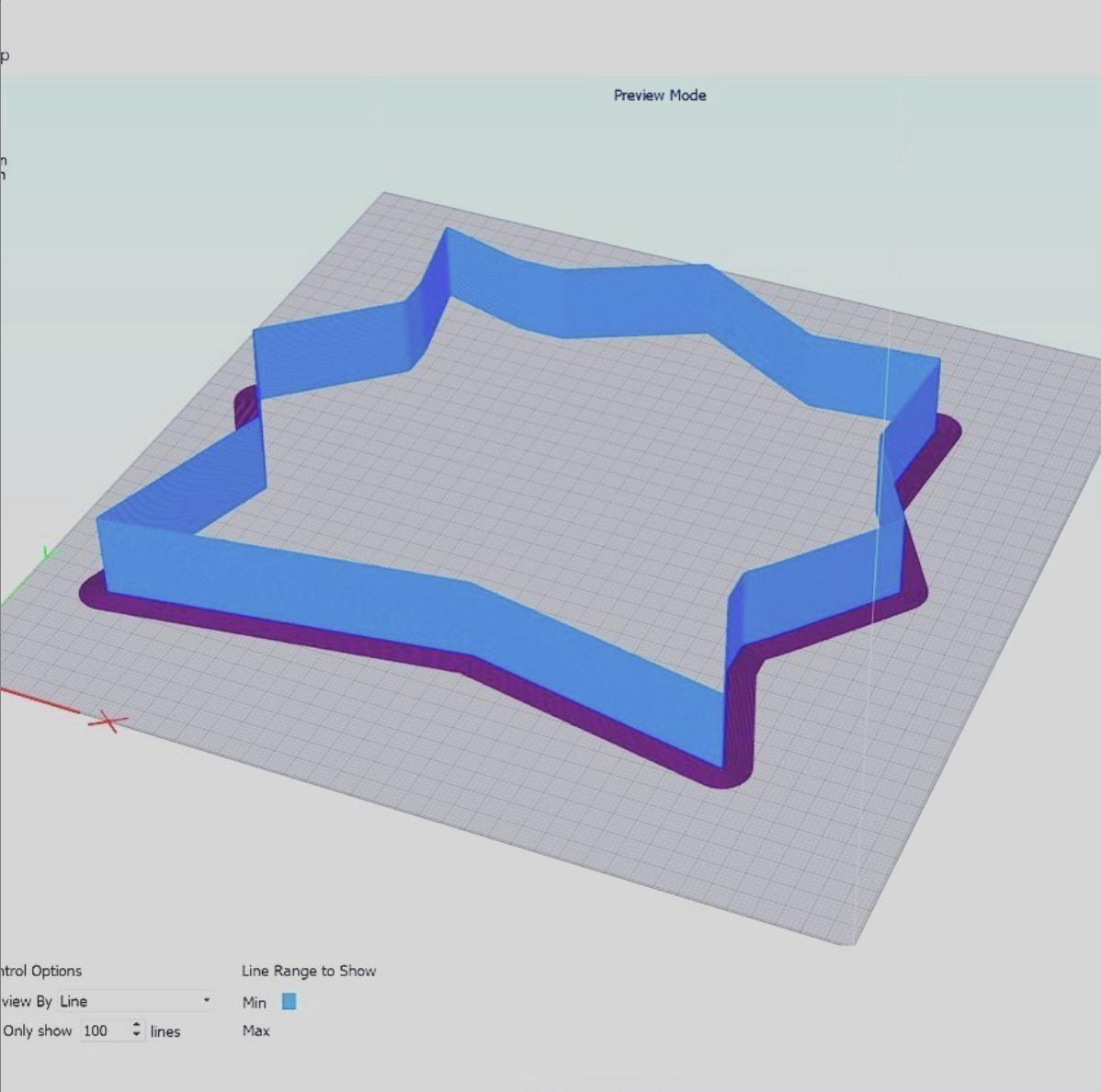From the Desk of… Ariel Reichman

Ariel Reichman, Sketch for outdoor sculpture for Dodging Walls, solo exhibition at Arnsberg Kunstverein, Germany, opening September 2020. Image courtesy of the artist.
In this interview artist Ariel Reichman tells readers about his practice and observations on the current moment. Born and raised in Johannesburg, South Africa, before moving to Israel, and currently living and working in Berlin, Ariel’s conceptual work traverses political and poetic terrains. In his multidisciplinary practice, Ariel investigates perception, memory, and ritual, using abstraction to address personal and public realities. Juxtaposing visually appealing works and aesthetics with serious subject matter, his work considers the politicization and depoliticization of actions and objects. Ariel writes to us from Berlin about his first solo museum exhibition in Germany at Kunstverein Arnsberg, which took place in September 2020. Ariel is a 2017 Artis Grant Recipient. To learn more about his projects, we recommend visiting his gallery’s websiteand reading the catalogpublication in conjunction with his exhibition supported by Artis. We also suggest reading this studio visit interviewwith the artist in his former studio in Tel Aviv.
This interview was conducted in July 2020 as part of Artis’ series, From the Desk of…. In this series, we check in with artists, curators, and collectors about their recent projects, reflections on social distancing and quarantine, due to the COVID-19 pandemic, as well as how they are practicing, experiencing, and engaging with art.

Ariel Reichman, The last (last) light, 2019, installation view, PSM Gallery, Berlin. Image courtesy of the artist.
Tell us about your art practice.
My practice moves from space to space, physically and mentally, and through mediums and concepts. My latest book is called The Space Between Here and There(available through the publishing house Distanz), a reference to a physical space as well as a mental state of mind. I am interested in what happens in between spaces. What happens in the space inside of a wall, for example. Or, lately, I have been thinking about staircases. Often, we talk about public and private spaces, or political and intimate spaces. And when I think of the staircase, I think of a space that is neither of these things. It is a space between the public street and the privacy of our home. When I think of a staircase, political aspects come to mind as well. A staircase can be used by someone seeking shelter, or during wartime, it can be used as an impromptu bunker.
Growing up in Apartheid South Africa in a religious Orthodox family, I have moved among many spaces. I like to be able to move freely back and forth. Left and right. Up and down. I think that we, as a society, need to promote more complex and flexible spaces. As such, I am interested in using the conceptual language of poetic politics in my practice.
In my recent project, I referenced works by the Cuban-American artist Félix González-Torres. I admire his brilliant approach to politics and poetry. In my last solo exhibition at PSM Galleryin Berlin, I presented a light installation titled The last (last) light (see image above). The piece refers to a work by González-Torres, Untitled (last light) . I painted the light bulbs with black lacquer, so that the light does not expand outwards into the gallery space, but is, instead, confined inwards. Due to the filtering of the light through the black lacquer, the filament of the 7W light bulbs appears red, reminding us of a heart beat or a vein.
And one of my latest works, I AM (NOT) SAFE , was developed before the COVID-19 pandemic and the current Black Lives Matter movement, and feels even more relevant right now. Through a touch screen, the question, Am I safe? is presented to the viewer. Depending on their answer, the neon letter NOT (part of the light installation) switches on and off, thus changing the text between I AM SAFE and I AM NOT SAFE. Safety (in the broadest sense) is a fundamental state of humanity. I am in discussions with Akershus Art Center in Lillestrøm, Norway, about installing the work on the occasion of the opening of their new museum complex and building, which will be inaugurated in 2021.

Model for Ariel Reichman’s solo exhibition at Kunstverein Arnsberg in Arnsberg, Germany, scheduled to open in September 2020. Image courtesy of the artist.
What projects are you working on now?
I am currently preparing my first solo exhibition, which will open in September at the Kunstverein Arnsbergand is curated by Lydia Korndörfer. The Kunstverein has exhibited artists such as Santiago Sierra, Gregor Schneider, Susan Philipsz, and Thomas Ruff, to name a few, so I am very excited to show there. We are planning a large outdoor sculpture installation, which will be installed for at least one year, as well as an “indoor” exhibition in the gallery spaces. The outdoor installation references the obstacles and exercises that are part of a “military playground”, and used in military training. Former soldiers in the Israeli Defense Forces (IDF) are familiar with these training elements. Outside of a military context, these elements transform into performative sculptures, referring to minimal and political concepts. For example, one component of a military playground is the “kicking wall”, which is a white cement wall with a red line painted on it. The red line marks where a soldier needs to “kick” off from, in order to have enough momentum to jump over the wall. Relocating this wall into an exhibition space, or neutral (depoliticized) context, changes the meaning of the wall and the painted red line. The object transforms into a performative sculpture.
As part of this project, there will also be public programming. We will organize performative (training) sessions with youth from Arnsberg, which will also be available online. I hope this project will be the beginning of an expanded series of “playground” installations, in different outdoor areas and in different cities around the world.

Ariel Reichman, Kicking Wall, 2020, installation view at the Haifa Museum of Art in Haifa, Israel. Image courtesy of the artist and PSM Gallery, Berlin.
In the galleries, I will show works from the past 10 years, and a series of new paintings. The new paintings are also connected to the military experience– the theme and background for these works. I researched military uniform tags (mostly tags worn by soldiers in the IDF) and noticed that landscapes appear very often. I removed the military elements from this imagery (such as swords, aiming targets, etc), concentrating solely on the landscapes as the subject for new paintings. I then paint what appears to be naive, beautiful colorful abstract paintings. Understanding the context of these landscapes, and their origin, the viewer is confronted with the political aspect of the work.

Sketches for new paintings by Ariel Reichman that will be presented in a solo show at Kunstverein Arnsberg in Arnsberg, Germany, scheduled to open in September 2020. Image courtesy of the artist.
Has your practice shifted in response to social distancing and quarantine regulations?
Well, I must admit, I am pretty used to an isolated working environment in my studio. But I think my practice has been affected by the fact that meetings and collaborations were not possible during the first few months of the pandemic. In addition, I purchased land in the countryside, outside of Berlin. So I am lucky that I have been able to spend a lot of time in nature, building my cabin (and talking to the deer).
is there anything, in particular, that you miss from life before social distancing?
I miss bumping into someone randomly on the street without the feeling that we have endangered our lives or smelling the perfume of someone sitting in front of you in the cinema. I even miss the smell of all the sweaty people in a club or at a concert. And, surely, hugging.

Ariel Reichman, Boom, 2020, image of preparations for a 3D printed object that will be installed inside of a cutout of the gallery wall, part of a solo show at Kunstverein Arnsberg in Arnsberg, Germany, scheduled to open in September 2020. Image courtesy of the artist.
How are you staying connected to friends, family, and colleagues? What does community and solidarity mean to you nowadays?
I miss my family in Israel and hope that we can see each other sometime soon. I am grateful that Berlin has become my home. I share it with friends and colleagues that have become family. I am also grateful for the financial aid that Berlin and Germany have offered to the artistic community. There is a general feeling that we are all somehow in “this” together, through the better parts and the worse parts. Everyone is more empathetic towards one another, which I notice on the street, at the corner cafe that is trying to keep service running, and with the cashier at the local supermarket. Because there are no tourists in the neighborhood, it also feels more organic. Like a community. Nevertheless, I am also worried about the financial forecast of all of us involved in the arts, and more specifically, independent freelancers that have lost their sources of income. There is a lively debate here about common income and I’m cautiously optimistic that a radical change of our current financial system is possible.
What is also very clear, due to the pandemic, is the acute need for public funding in the arts and culture sector, and support for non-profit organizations (such as Artis, and others). The arts, and artists, cannot rely on private financial supporters alone. This is very present and clear. There needs to be solidarity among artists, institutions and organizations, now more than ever. I have a lot of respect for my artist colleagues living in Israel, who are working under challenging circumstances, but are still able to maintain a lively and relevant local art scene.
ARTIST STATEMENT
One’s subjective memories, daily rituals and fantasies form the basis for my interests. I am attracted to the state of mind of things; the possibility of encountering victory as well as total failure and defeat. Never gazing from a distance at the other, but rather working from the inside. Surely the intimate is political, and throughout this agreement one can attempt to understand the politics of oneself and one’s surroundings, whether fiction or truth, historical reality or fable; the space between here and there.
– Ariel Reichman
The world vibrates in Ariel Reichman’s works.
Objects transform into confusing or dismaying feelings.
Even the photos, which Ariel takes of plants at night, appear as force;
lighting on them is invasive, the objects frozen in shock and beauty.
The time to live, the time to die, slogan of one of Ariel’s video work,
is quiet-posed in its photos in the fraction of one second.
His practice is about human vulnerability as well as of the
moment at which the senses of things overwhelm people.
In Japanese aesthetics, the term mono-no-aware was shaped:
the pathos of things, empathy with them, and the consciousness
of their momentariness. Reichman’s works are characterized by this
sensitivity. They draw a map of intensive sentience’s, the influence
of a conflict on senses, feelings and perception.
– Hito Steyerl , artist, on Ariel Reichman
